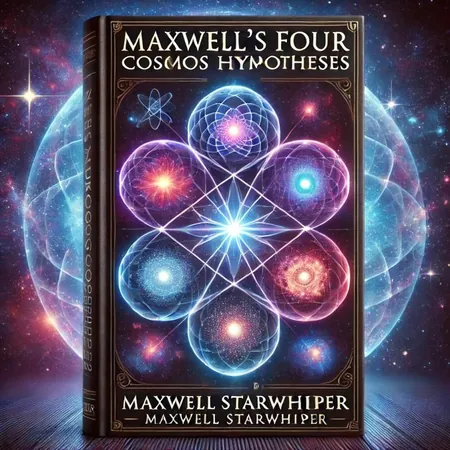
Groundbreaking Discovery: Astronomers Identify Source of Enigmatic Repeating Radio Bursts!
2024-12-02
Author: Emily
For the past year, astronomers have been captivated by the mystery of repeating radio bursts from space, first identified in 2022. Now, new research has brought us one crucial step closer to solving this cosmic puzzle, revealing that these remarkable signals originate from a common lightweight star known as a red dwarf, likely in a binary relationship with a white dwarf—the remnant core of a long-expired star.
The Fascinating Phenomenon of Pulsating Signals
In an extraordinary breakthrough, scientists discovered periodic bursts of radio waves that recur every 18 minutes, lighting up the cosmos in a dazzling display. These signals, bright enough to outshine their stellar neighbors, lasted for an impressive three months before fading away.
While some repeating radio signals are attributed to neutron stars known as radio pulsars, which emit a steady beam of radio waves as they rapidly spin, this particular finding posed an intriguing challenge. Current astrophysical models suggest that a pulsar rotating every 18 minutes wouldn’t produce radio emissions, leading researchers to theorize that this could represent new physics in the universe—or perhaps a deeper understanding of pulsar behavior, which has remained elusive even after decades of study.
Since the initial findings, astronomers have identified a handful of similar "long-period radio transients," but the exact nature of these signals has remained a tantalizing mystery.
Venturing Beyond the Milky Way's Core
Historically, these mysterious radio sources have been located in the crowded central regions of the Milky Way galaxy, making it difficult to pinpoint their origins due to the dense concentration of stars in those areas. To tackle this challenge, researchers launched an extensive campaign using the Murchison Widefield Array radio telescope in Western Australia. This powerful instrument allows scientists to survey vast portions of the sky—1,000 square degrees every minute.
Among their latest discoveries is a new source designated GLEAM-X J0704-37, which emits radio waves in minute-long bursts. Remarkably, these pulses recur only once every 2.9 hours, making it the slowest long-period radio transient identified to date.
Investigating the Source of the Radio Waves
Follow-up observations conducted with the highly sensitive MeerKAT telescope in South Africa helped to pinpoint the radio emissions precisely. It turns out that the radio waves are emanating from a red dwarf star—one of the most common types of stars in our galaxy, comprising about 70% of all stars. Although red dwarfs are incredibly numerous, they remain faint enough to escape the naked-eye view.
Analyzing a combination of data from previous Murchison Widefield Array observations alongside new information from MeerKAT, scientists noticed a captivating pattern: the timing of the pulses varied slightly, suggesting the presence of another celestial body influencing the red dwarf. This unseen companion is thought to be a white dwarf, the final evolutionary stage of smaller stars like our sun, which provides a more stable evolutionary path than other potential candidates such as neutron stars or black holes.
Stars in Unison: The Mechanics Behind the Signal
But how do a red dwarf and a white dwarf generate these fascinating radio signals? The answer lies in the stellar wind—the stream of charged particles expelled by the red dwarf. As this stellar wind collides with the magnetic field of the white dwarf, energy is converted into radio waves. This dynamic could resemble the interaction between the solar wind and Earth's magnetic field, which creates stunning auroras and accompanying low-frequency radio emissions.
While researchers are already aware of similar systems, including one known as AR Scorpii—where rapid brightness variations in the red dwarf indicate a powerful, regular emission from its white dwarf companion—none have yet matched the brightness or the slow pulsation rate exhibited by these long-period radio transients.
An Ongoing Journey to Unravel Cosmic Secrets
Ultimately, this discovery paves the way for a deeper understanding of the universe’s enigmatic processes. The findings emphasize the importance of remaining open to unexpected surprises in cosmic research. As astronomers continue to scan the skies, who knows what additional revelations could emerge? We are on the brink of unveiling more secrets that the cosmos holds, and the excitement is palpable. Stay tuned for more groundbreaking revelations in the world of astrophysics!









 Brasil (PT)
Brasil (PT)
 Canada (EN)
Canada (EN)
 Chile (ES)
Chile (ES)
 España (ES)
España (ES)
 France (FR)
France (FR)
 Hong Kong (EN)
Hong Kong (EN)
 Italia (IT)
Italia (IT)
 日本 (JA)
日本 (JA)
 Magyarország (HU)
Magyarország (HU)
 Norge (NO)
Norge (NO)
 Polska (PL)
Polska (PL)
 Schweiz (DE)
Schweiz (DE)
 Singapore (EN)
Singapore (EN)
 Sverige (SV)
Sverige (SV)
 Suomi (FI)
Suomi (FI)
 Türkiye (TR)
Türkiye (TR)